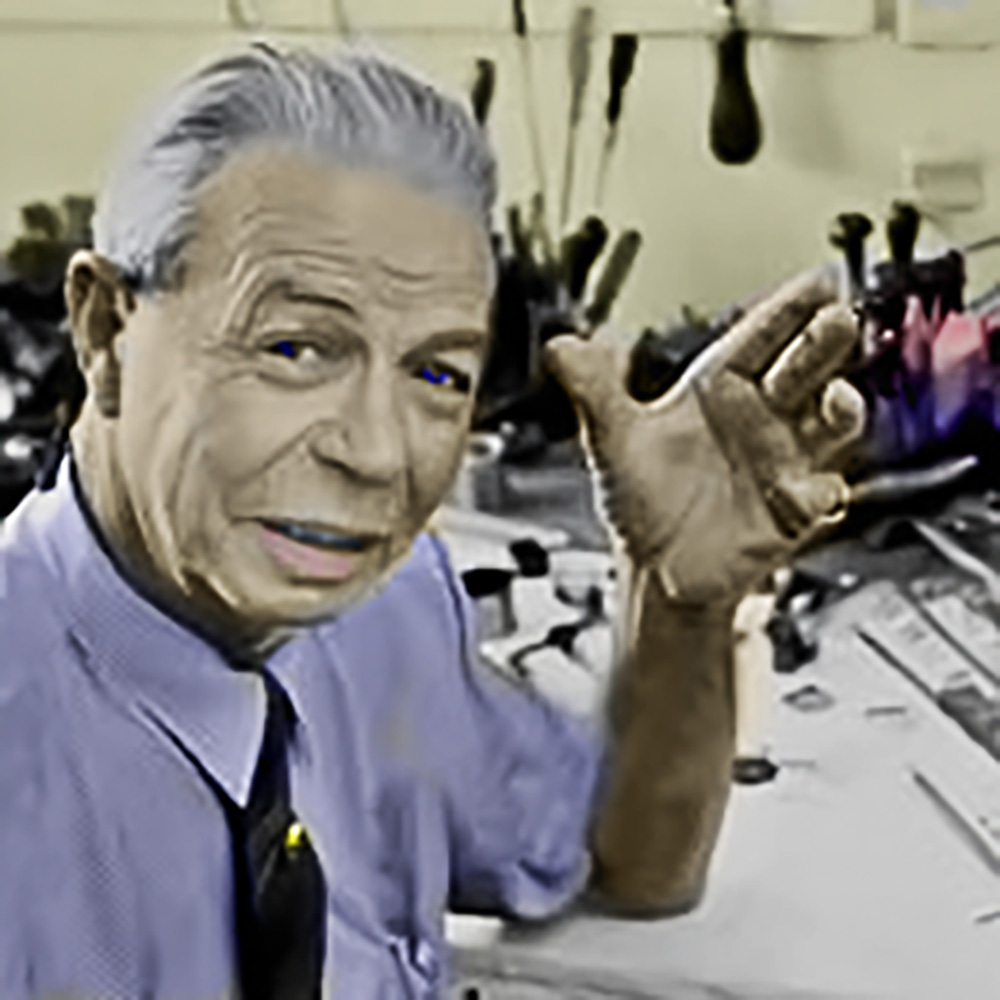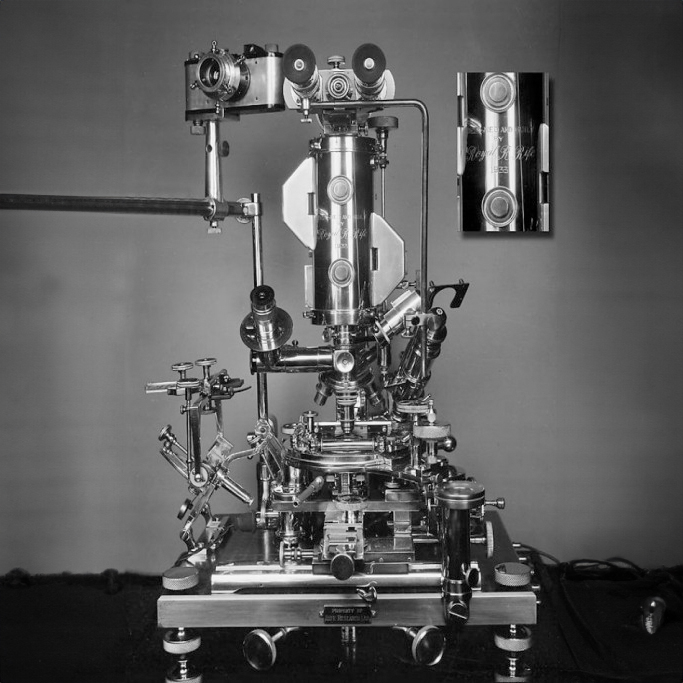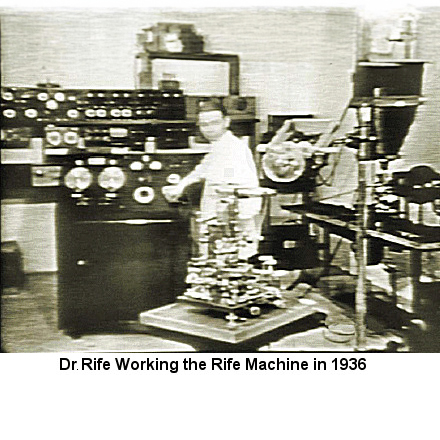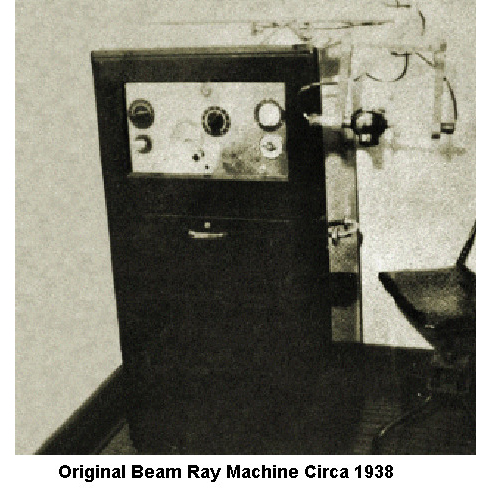
From the 1950s to 2010 A number of research scientists, working independently, have slowly been verifying the scientific principles upon which Rife”s clinical cures of the 1930s were based. A body of recognized scientific evidence now overwhelmingly supports the original cancer theories articulated and demonstrated by Rife 80 years ago. This includes modern AIDS researchers.
In the 1950s, John Crane-engineer, machinist, laboratory analyst, health researcher and inventor-became Rife”s partner. Crane, born in 1915, worked at Rife”s side from 1950 until Rife”s death in 1971. During this time, he learned all the secrets of Rife”s cancer treatment . . . and all the details of its suppression.
Together, the two men designed and constructed new and better equipment, and managed to interest a new generation of doctors in the possibilities of a genuine, lasting and painless cancer treatment. And again the authorities struck. Crane was jailed, equipment was smashed, records were destroyed. Again the motives driving on the forces of suppression were the same. By sharing the long hidden facts, as well as thousands of documents preserved from the 1930s, Crane has enabled the full story to be told.
Dr. Arthur Kendall was Director of the Hygienic Laboratory of the Panama Canal Commission in 1904. The Hygienic Laboratory was the forerunner of the National Institute of Health. In 1906, Kendall became a bacteriologist at the Rockefeller Institute. This was followed by 3 years as an instructor at Harvard University Medical School (1909- 1912).
In 1912, Kendall became head of the first wholly independent Department of Bacteriology in America, at Northwestern University. In 1916, he was appointed Dean of the Medical School. In 1924, Kendall became Professor of Bacteriology and public health at Washington University in St. Louis, Missouri. Then in 1928, he returned to Northwestern and shortly afterwards began working with the California group which conducted the first successful cancer clinic in 1934. In 1942 he retired from Northwestern. More than 100 of his papers were published.
On December 1 1, 1931, Science magazine reported in its Science News section that Dr. Kendall had filtered bacteria to a smaller form and that these micro-organisms had remained alive on a medium of his creation. His “K Medium” had broken down the typhoid bacillus into a filterable form. Moreover, using a special microscope, he was able to see: (1) the full sized bacillus still unchanged, (2) other bacilli in an intermediate stage between the filterable and the non-filterable phases, and (3) still other, very small turquoise-blue bodies which were the final bacillus form. This final form was the size of a virus, and yet it was still a bacteria! The basis for Dr. Rivers” authority had been challenged. When the official publication of the California Medical Association, California and Western Medicine, published the incredible news in December 1931, and Dr. Kendall was invited to address the Association of American Physicians, Rivers reacted. First he tried to have Kendall’s talk cancelled. When that was refused by the sponsors, he insisted that he and Dr. Hans Zinsser of Harvard be allowed to speak also.
After Kendall made his presentation before the Association in May 1932, Zinsser and Rivers publicly ripped Kendall apart, stating that since they could not replicate Kendall’s results, Kendall was lying. The opposition mounted by Rivers and Zinsser was such that few scientists and doctors of the time dared to support Kendall. Kendall could not convince the orthodox “no filtration” school that experiments done according to his techniques would validate his discovery. The opposition group did not want to learn. In 1974, Lida H. Mattman of the Department of Biology, Wayne State University, published Cell-Wall Deficient Forms. By then, pleomorphism was a proven phenomenon although the orthodox school continued to ignore it. Mattman wrote, “Current bacteriology holds the belief that each species of bacteria has only a certain very simple form. . . .”
Kendall had not only challenged the experience of Rivers and other established authorities, but had unknowingly threatened medical and financial interests
By 1982, when Gerald J. Donigue of Tulane University School of Medicine published Cell-Wall Deficient Bacteria, the suppression of Kendall’s work for 50 years had obvious results. Domingue writes: ””There is a considerable body of experimental and clinical evidence-much of which has never been published-supporting the concept that cell wall deficient bacteria may be agents of disease. . . . There are no current books whose primary focus is on the clinical significance of these unusual bodies. . . . The most neglected research area has been on the role of these organisms in disease.”
Thus, 50 years after Kendall’s discovery, even with substantial evidence, the erroneous orthodox view continued to dominate medical theory, cancer research, and cancer treatment. One of Kendall”s renowned supporters was Dr. Edward Rosenow of the Mayo Clinic. Rosenow was viciously attacked by Thomas Rivers of the rival Rockefeller Institute. As reported in the 1976 article in New Age Journal, Rosenow’s son, Dr. Edward C. Rosenow, Jr., Chief Administrative Officer of the American College of Physicians, “asserts that his father was all but accused by Rockefeller Institute research moguls of experimental dishonesty.” Rosenow told his son, “They simply won’t listen.” (Rosenow’s son later told how, while a student of Zinsser’s at Harvard, Zinsser had admitted to Rosenow Jr. that he, Zinsser, had not even used Rosenow Sr.’s medium in failing to duplicate and then condemning Rosenow’s test results.)
The medical moguls apparently wouldn’t listen even to one of their own. In 1911, Peyton Rous of the Rockefeller Institute provided the first evidence that a virus could cause a cancer. Yet for decades the orthodox view was that cancer resulted from “somatic mutation”-a gene develops a flaw and disorganizes cellular function.
David Locke, author of a book on viruses published in 1974, recalled meeting Peyton Rous in the corridors of the Rockefeller Institute during the mid-century and being shocked to learn that a micro-organism could be the cause of cancer. Locke wrote, “The 1940s and 1950s were the heyday of the somatic mutation theory. At the time, it was scientific dogma that cancer was a peculiar transformation of cells caused not by an infectious agent, but by a mutation of the cells.” Peyton Rous was finally honored for his discovery in 1966 when he received the Nobel Prize. He was 86 years old and his discovery 55 years past. Because the Rous virus has been around for so long, it has been carefully categorized. However, as described in Lida Mattman’s 1974 book, the Rous “virus” has been found to be a classical bacterium. Citing Dr. Eleanor Alexander-Jackson’s work, Mattman explained that the Rous virus produces DNA as well as RNA. Viruses supposedly contain only DNA or RNA, not both. The orthodox virus school undoubtedly has difficulty with the fact that one of the “classical” viruses-if not the most famous-is in truth a “filterable bacterium.”
In a paper presented to the New York Academy of Sciences in 1969, Dr. Virginia Livingston and Dr. Eleanor Alexander- Jackson declared that a single cancer micro-organism exists. They said that the reason the army of cancer researchers couldn’t find it was because it changed form. Livingston and Alexander-Jackson asserted: “The organism has remained an unclassified mystery, due in part to its remarkable pleomorphism and its stimulation of other micro-organisms. Its various phases may resemble viruses, micrococci, diptheroids, bacilli, and fungi.” Florence Seibert, Professor Emeritus of Biochemistry, University of Pennsylvania and Dr. Irene Diller from the Institute for Cancer Research in Philadelphia made essentially the same argument to the New York Academy of Sciences in 1967. Seibert’s book ‘Pebbles on the Hill of a Scientist’ (1968) includes the following: “We found that we were able to isolate bacteria from every piece of tumor and every acute leukemic blood specimen that we had. This was published in the Annals of the New York Academy of Sciences.” Seibert also clearly recognized pleomorphism as the underlying scientific reality which must be appreciated if cancer is to be cured: “One of the most interesting properties of these bacterium their great pleomorphism.
For example, they readily change their shape from round cocci, to elongated rods, and even to long thread-like filaments depending upon what medium they grow on and how long they grow. And even more interesting than this is the fact that these bacteria have a filterable form in their life cycle; that is, that they can become so small that they pass through bacterial filters which hold back bacteria. This is what viruses do, and is one of the main criteria of a virus, separating them from bacteria. But the viruses also will not live on artificial media like these bacteria do. . . . Our filterable form, however, can be recovered again on ordinary artificial bacterial media and will grow on these.” The Mayo Clinic”s Dr. Edward Rosenow, who worked with Kendall in the preparatory stage of the successful cancer clinic, had written as early as 1914 in the Journal of Infectious Diseases that, “It would seem that focal infections are no longer to be looked upon merely as a place of entrance of bacteria, but as a place where conditions are favorable for them to acquire the properties which give them a wide range of affinities for various structures.”
This was also Bechamp”s conclusion back in the 19th century- that the body”s environment produced a place for microorganisms to become diseased bacteria and that improving the body”s internal environment could alter bacteria into harmless, even useful “microzymia.” E. Douglas Hume has written, “Bechamp . . . had demonstrated the connection between a disturbed state of body and the disturbed state of its indwelling particles, which, upon an unfortunate alteration in their surroundings, are hampered in their normal multiplication as healthy microzymas and are consequently prone to develop into organisms of varied shape, known as bacteria.
Upon an improvement in their environment, the bacteria, according to Bechamp”s view, by a form of devolution may return to their microzymian state, but much smaller and more numerous than they were originally .” At the end of 197 1, Congress passed the National Cancer Act. As Robin and David Nicholas later wrote (Virology, an Information Profile) in 1983, “In the 1970s research into the role of viruses in cancer was virtually given a blank check, particularly in the USA, the powerhouse of virus research.” Bacteria and its various forms were ignored. Even in 1986, when researchers mention bacteria as a possible cause of cancer, they are dismissed by the “experts.”
One high university official stopped reading a report on the 1934 cancer treatment when he came across the word bacteria, so brainwashed was he to the certainty that viruses were the cause of cancer while bacteria were of no importance in cancer. And yet, by 1986, despite the massive funding of virus research, more people than ever continued to die of cancer. Memorial Sloan-Kettering Cancer Center, the world”s largest non-profit cancer research center, and still the leading institutional opponent of pleomorphism research and related cancer treatment in America, stated in a 1986 fund-raising appeal that over 460,000 Americans died of cancer in 1985. (Sloan-Kettering”s own 1975 tests had indicated pleomorphic bacteriavirus in all cancer blood tests, but they had buried the laboratory results.) In 1974, Rockefeller University’s Dr. Norman Zinder admitted, “We don’t know how to attack cancer, much less conquer it, because we don’t understand enough about how it works.” Yet the answer existed then and now in scientific journals, Academy of Sciences’ reports, books, old newspapers, and other forms. If money wasn’t being invested into careful research and cross-referencing of all the relevant literature, then why wasn’t it?
The cancer authorities-in the 1980s as in earlier decades had censored ideas and researchers who argued the unorthodox pleomorphism cause and cure for cancer. The money and clinical trials went to orthodox virus monomorphism supporters and chemical treatments aimed at killing cancerous cells, not micro-organisms in the bloodstream attacking the entire body. The funding procedure was essentially stacked against those who, even though top scientists, didn’t parrot the conventional (and wrong) beliefs. Ralph W. Moss, former Assistant Director of Public Affairs at Memorial Sloan-Kettering Cancer Center explained the roadblock in his 1980 book The Cancer Syndrome: “A new grant request must therefore be approved by a wide variety of scientists, bureaucrats and businessmen. It must be the result of a consensus of opinion among these many individuals. Almost by definition, however, such an application must be well within the bounds of conventional science.
These ”cumbersome constraints” make it difficult, if not impossible for radically new ideas to be approved by the NCI.” (NCI = the National Cancer Institute) The “radically new ideas” might include the one that cured cancer in the California clinic in 1934. The 460,000 Americans scheduled to needlessly die in the next year might like some of their tax money to fund a new clinic using those long covered-up ideas and technologies. As Frank J. Rauscher, Jr., Director of the National Cancer Institute, rhetorically asked in 1975, “What are we doing with the taxpayer”s money?” It is a question which no one in authority wants to answer honestly-the horrible results of the cancer treatment cover-up are too well-known. The death toll from 1970 to the present (1986) is more than 6 million, matching the Nazi holocaust. When the death count includes those who died from 1934 to 1970, the number of victims is staggering. The cancer treatment cover-up is America”s holocaust. A political firestorm could erupt if a large sector of the American public learned the truth.



